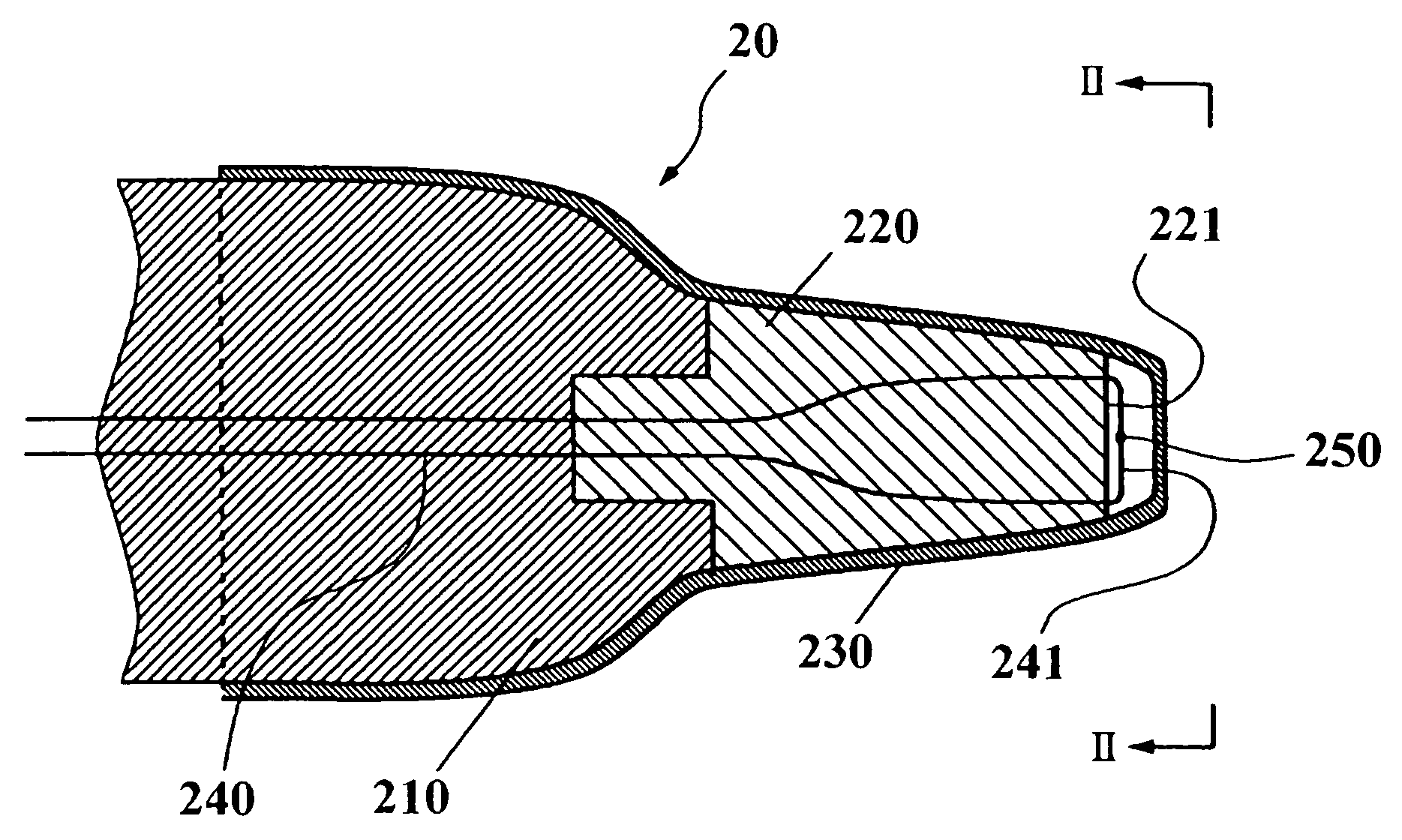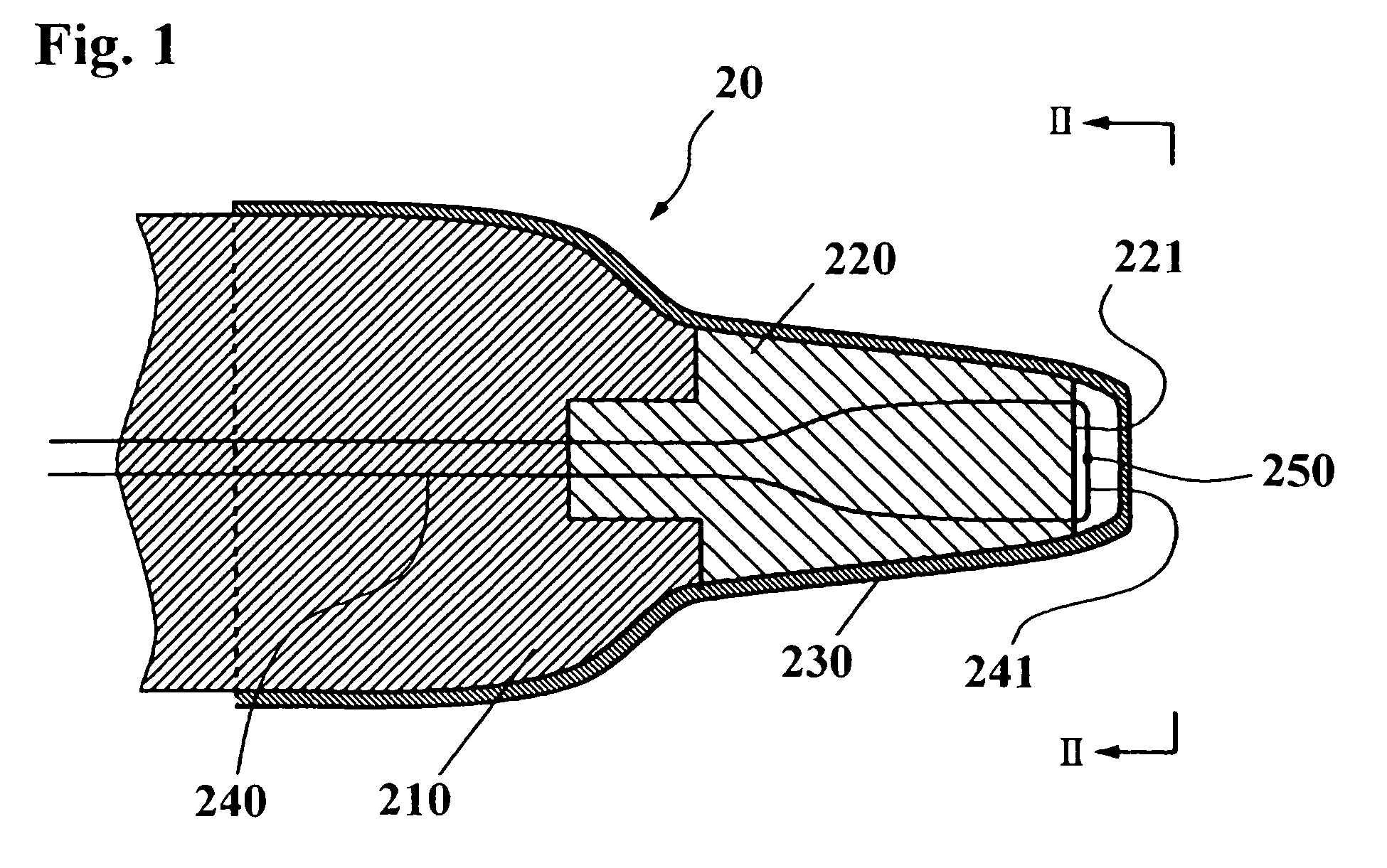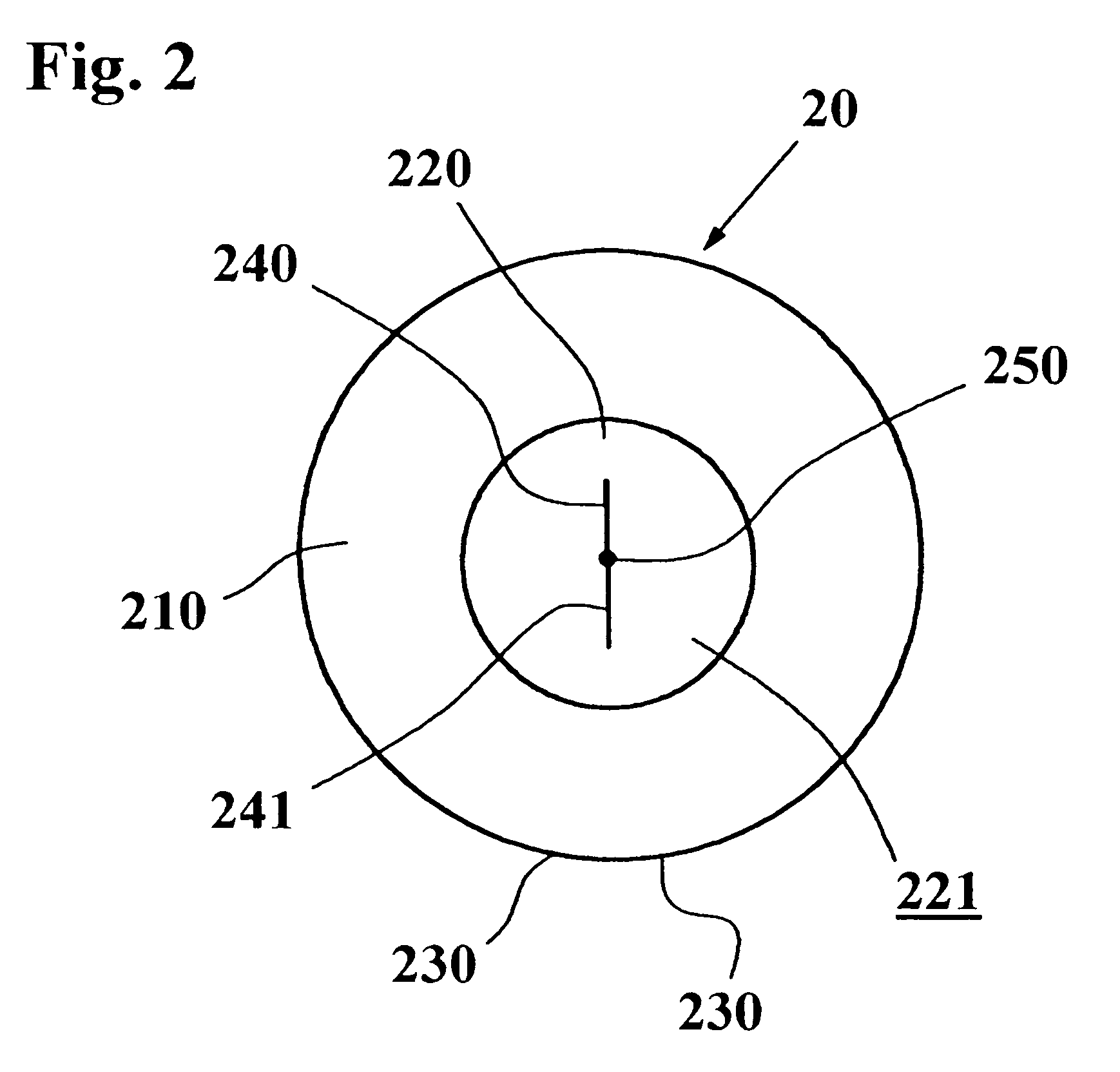Ear-type clinical thermometer
a thermometer and ear-type technology, applied in the field of thermometers, can solve the problems of unstable output voltage, inability to effect precise measurement, and inability to accurately measure the output voltag
- Summary
- Abstract
- Description
- Claims
- Application Information
AI Technical Summary
Benefits of technology
Problems solved by technology
Method used
Image
Examples
Embodiment Construction
[0029]In describing the preferred embodiment of the present invention, reference will be made herein to FIGS. 1 to 7 of the drawings in which like numerals refer to like features of the invention. Features of the invention are not necessarily shown to scale in the drawings.
[0030]Referring now to FIGS. 1 to 7, an embodiment of an ear-type clinical thermometer in accordance with the present invention will be explained below. FIGS. 1 and 2 show a structure of a probe 20 in an ear-type clinical thermometer in accordance with the present invention. In the probe 20, a second high heat insulation member 220 made of a resin material is connected to a distal end of a first heat insulation member 210 by conventional coupling means (for example, welding, adhesive, press-fitting, screw-coupling, or the like). The second high heat insulation member 220 is tapered forwardly from a portion coupled to the first heat insulation member 210 to an end surface 221. A protection cover 230 sheathes the fi...
PUM
 Login to View More
Login to View More Abstract
Description
Claims
Application Information
 Login to View More
Login to View More - R&D
- Intellectual Property
- Life Sciences
- Materials
- Tech Scout
- Unparalleled Data Quality
- Higher Quality Content
- 60% Fewer Hallucinations
Browse by: Latest US Patents, China's latest patents, Technical Efficacy Thesaurus, Application Domain, Technology Topic, Popular Technical Reports.
© 2025 PatSnap. All rights reserved.Legal|Privacy policy|Modern Slavery Act Transparency Statement|Sitemap|About US| Contact US: help@patsnap.com



